Flea beetles are tiny yet extremely destructive garden pests. But you can control their population and prevent them from destroying your plants.
In this complete guide, I will show you all you need to know about how to manage them and ensure they cause minimal damage to your garden.
You’ll learn all about these annoying little bugs, including how to identify them, what type of damage they do, prevention tips, and lots of effective organic treatment methods you can use to fight them.
I remember when flea beetles first invaded my garden several years ago. There were hundreds of them jumping around on the soil and all over my plants. It seemed like they were everywhere I looked and, not only were they decimating my seedlings, it was disgusting.
I immediately went to work to figure out the best ways to get rid of them quickly, and save my garden. It turns out that it’s not too difficult, whew!
The good news is that you don’t have to reach for the chemical pesticides, there are several ways to control them naturally using organic methods and techniques.
What Are Flea Beetles?
Flea beetles are small, hard-shelled insects that feed on plants by sucking the sap out of the leaves or chewing tiny holes.
They can be very destructive in the garden in early spring, and a large population will quickly kill immature plants and seedlings.
Though they aren’t actually related to fleas, they get their common name because they have large back legs that allow them to jump.
What Do They Look Like?
Up close, flea beetles look like tiny beetles. They’re shiny, and can be black, brown, or bluish in color. Some species may even have spots or stripes.
They’re very small, so from far away they look like black or brown specks on the leaves of a plant. It’s hard to see them from a distance, so they can easily go unnoticed.
A quick way to make a positive identification is to disturb the plant or surrounding soil. They’ll start jumping around like fleas when they are disturbed.
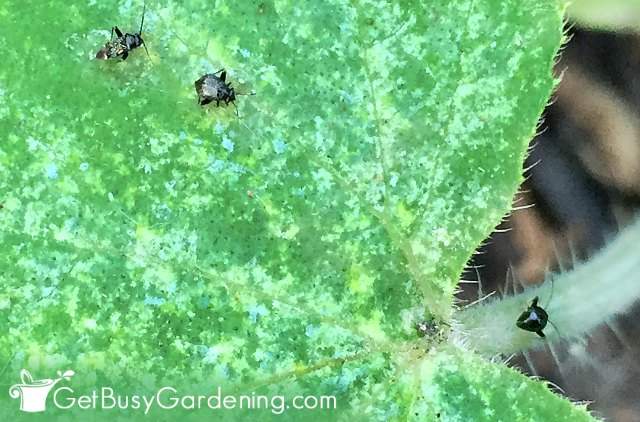
Life Cycle
To successfully control flea beetles in your garden, it’s important to understand their life cycle. There are 4 stages: eggs, larvae, pupae, and adults.
The adult females can lay their eggs on plants or in the soil. Once they hatch, the larvae are minute white worms that are barely visible to the naked eye. The larvae live in the soil, and feed on the roots of the plants.
After several weeks they pupate, and new adults emerge a few days later. There can be more than one generation per growing season, depending on where you live.
The adult beetles hibernate in the soil or in plant debris through the winter. They emerge as soon as it warms up in early spring to feed and lay their eggs, starting the cycle over again.
What Do They Eat?
Though they can eat pretty much any type of plant, flea beetles prefer vegetables. So, if you have them in your yard, you’ll probably find the damage is the worst in your veggie garden.
I have also found them feeding on some of my annual plants, and even on perennials before. But the damage has never been as bad in my flower beds as it is in my vegetable garden.
Damage To Plants
Flea beetles cause the most damage in the spring when plants are still small. They can kill seedlings in a short time, or stunt the growth of immature plants.
Often the first indication of an infestation is faded, yellowing, or splotchy looking leaves. When you take a closer look, you can see the tiny beetles crawling around on the plant.
Adults cause the most damage by chewing irregular holes or pock marks in the leaves. Sometimes the holes are small, but they can be fairly large too. The larvae usually cause little or no damage.
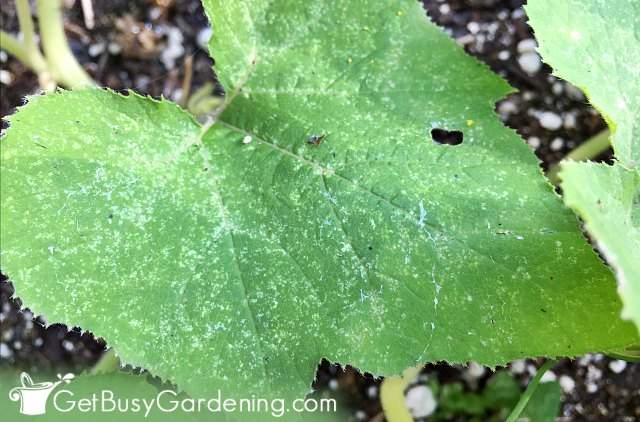
How To Control Flea Beetles
Getting rid of flea beetles completely isn’t really an achievable goal. Most of the time, you just have to control them long enough for the seedlings to outgrow the damage, and the problem will disappear.
Once the plants are large, the beetles aren’t as much of a concern. The population will go down by summer, and your plants will be mature enough to withstand the damage.
It’s not too difficult, and there are several natural treatment methods that are very effective to protect your baby plants from getting too much damage.
Related Post: How To Control Garden Pests Naturally
How To Treat Flea Beetles Organically
There’s no reason to use toxic chemical pesticides to get rid of flea beetles. Yay! Below are the most effective organic treatment methods you can try. I recommend combining several of them to see what works the best in your garden.
Neem Oil
Neem oil is a naturally occurring insecticide that kills bugs. It also has a residual effect, so you don’t have to spray it directly on them (which is great, since the beetles tend to jump away when you start spraying anyway).
While it can kill some of them right away, it does take some time to get rid of flea beetles completely, especially when the population is large. But it’s a very effective long-term solution. Learn how to use neem oil here.
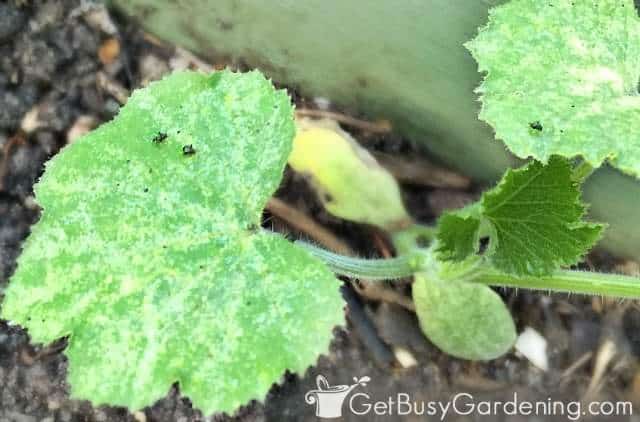
Insecticidal Spray
Soapy water will kill flea beetles on contact. It’s easy to make your own by mixing 1 teaspoon of mild liquid soap with 1 liter of water, or you can buy a pre-mixed organic insecticidal soap.
These sprays will quickly kill the adults, but they don’t have a residual effect. So they’ll only work if you spray them directly on the beetles.
Diatomaceous Earth
Diatomaceous earth (DE) is another great option for controlling flea beetles organically. It’s made out of tiny pieces of ground up fossilized organisms.
The fine powder gets under the shells of the beetles, and works like tiny bits of glass to kill them. Sprinkle it around the base of the infested plants, or directly on the beetles.
Sticky Traps
Placing yellow sticky traps in your garden is another great non-toxic solution. They will attract and capture the adults as they jump from plant to plant.
They could also capture other destructive bugs in the process, so this one can be a double bonus!
Beneficial Nematodes
Beneficial nematodes are microscopic organisms that will attack and kill the larvae in the soil. They are completely harmless to humans and pets, and won’t hurt beneficial insects.
An added bonus is that they will kill the larvae of many other types of destructive bugs too (like Japanese beetles). Learn more about using beneficial nematodes in your garden here.
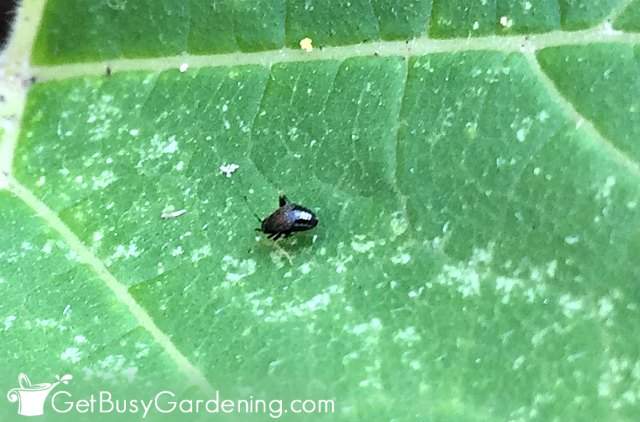
Repellent Plants Or Trap Crops
Some gardeners like to use plants that flea beetles love the most to lure them away from their main vegetables. These are called trap crops.
I know from experience that radishes and salad greens work great for this purpose. But you have to treat them like “throw away” plants, so you won’t be sad when they get destroyed.
Related Post: Natural Garden Pest Control Remedies & Recipes
How To Prevent Flea Beetles
If you struggle with controlling flea beetles in your garden, there are a few things you can try that will help to prevent a major infestation.
- Clean up your garden: The adults overwinter in leaves and other debris leftover in the garden. So be sure to always clean out your vegetable garden in the fall.
- Till the soil: Adult flea beetles can also overwinter in the soil. Tilling or turning your garden soil in the fall and/or early spring will expose them and help to kill them.
- Delay your plantings: Since they emerge in early spring and cause the most damage on young seedlings, try waiting a few weeks before planting everything. This will give the plants more time to mature so they can withstand the damage better. Plus, the beetle population may not be as high.
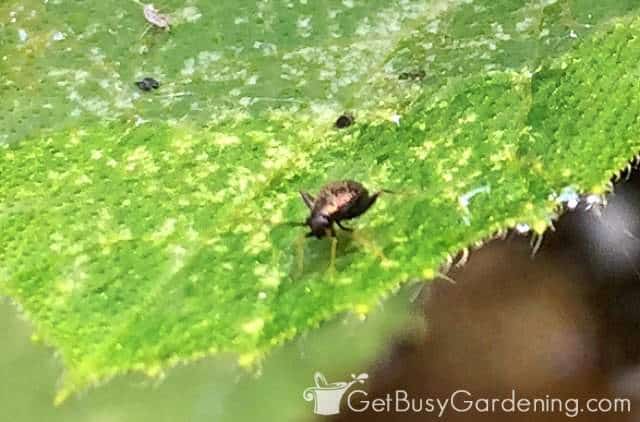
FAQs
The adult beetles come out of hibernation shortly after the ground thaws and temperatures start warming up in early spring.
No, flea beetles do not bite. They only feed on plants.
They can overwinter in the mulch and leaf debris, but they don’t live in the mulch. Their larvae lives in the soil.
There are several beneficial predators that will eat the adults or the larvae, including ladybugs, predatory wasps, and beneficial nematodes.
Flea beetles are harmful to small plants and seedlings. But they are not harmful to humans or pets.
No. In some cases, mulch can actually help with controlling flea beetles by protecting the soil. But mulch doesn’t always help with getting rid of them.
No. Don’t let the name confuse you. Flea beetles are not even related to fleas, they’re in a whole separate family. They just get their common name because they have long back legs and jump around, so they look like fleas.
Controlling flea beetles in your garden can be frustrating. But with so many effective organic treatment options to choose from, there’s no reason to use chemical pesticides. Just be persistent with your treatments, because you can’t get rid of them the first time you try.
Share your experiences or tips for controlling flea beetles in the comments section below.
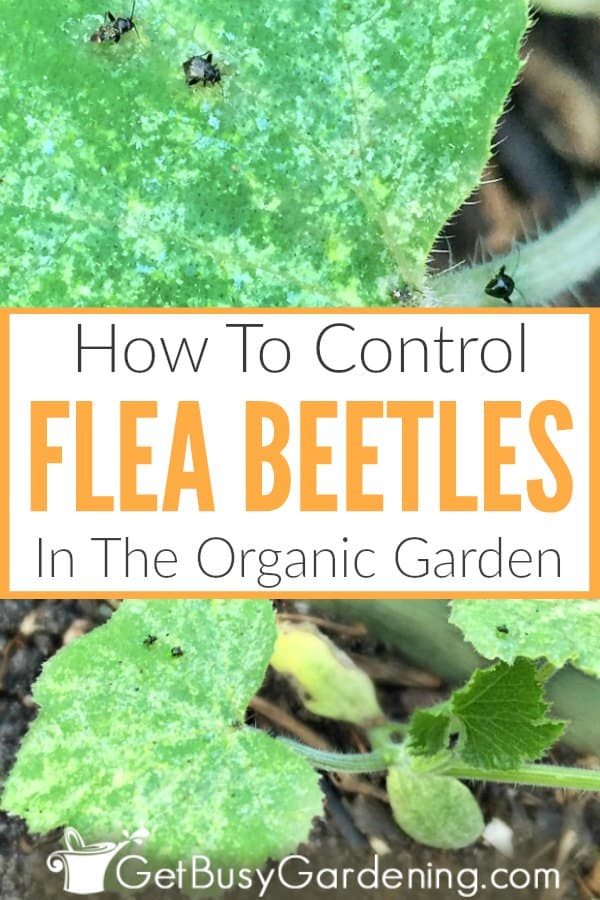
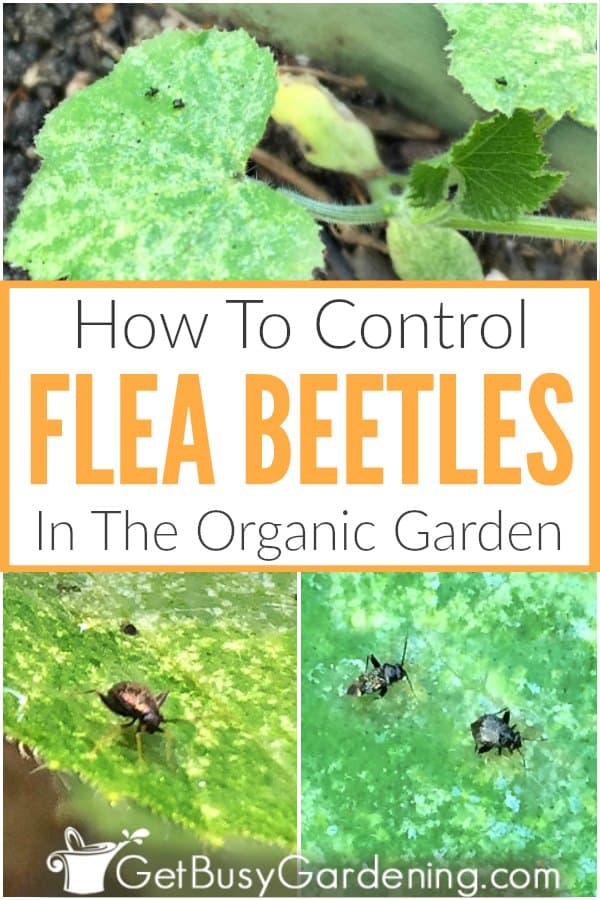
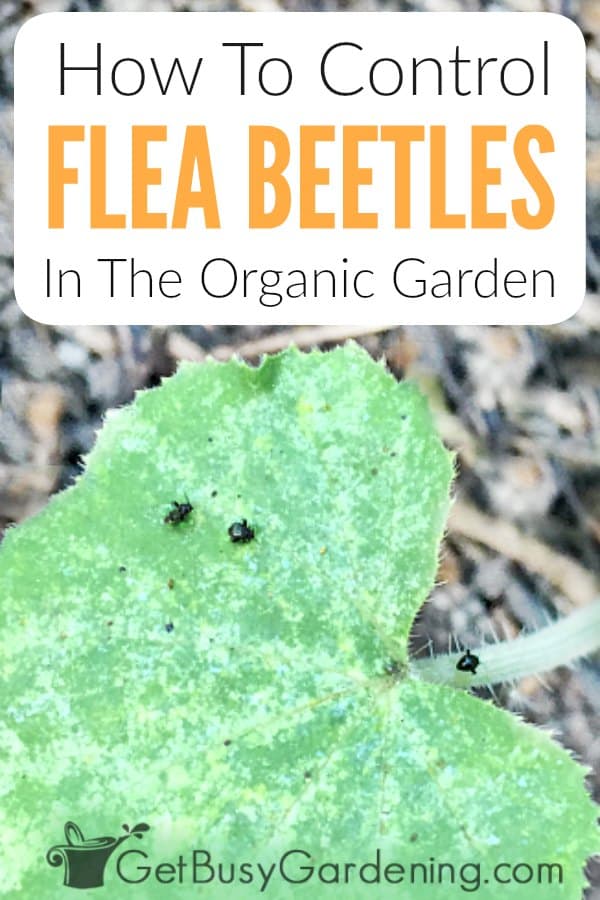
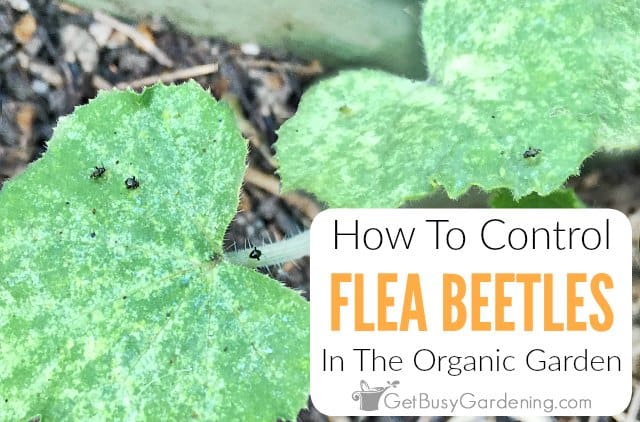


Leave a Reply